Last Friday I went to a Forestry Commission workshop called "Woodfuel: Fuel for the future?". It was held at the Bentley Woodfair (also know as the Weald Woodfair), which meant there was a lot of interesting stuff going on. I'll come on to to what the workshop speakers said shortly, but first let's have a look at some pictures and videos of the practical demonstrations that were included.
The first stop on the tour of demonstrations was a tractor fitted with what's know as a "harvesting head", which is able to grab hold of a tree, cut through it near the base, remove the branches and cut the tree to a set length. It even has computerised sensors to automatically measure the volume of wood produced! Here's the harvesting head on the ground: and stowed for driving on the road:
and stowed for driving on the road:
 It extends from the back of the tractor on a hydraulically powered crane:
It extends from the back of the tractor on a hydraulically powered crane: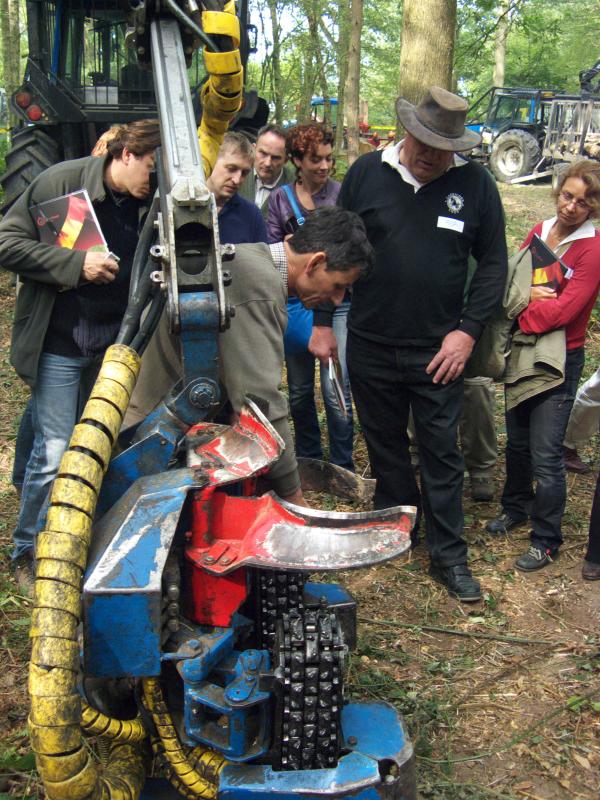
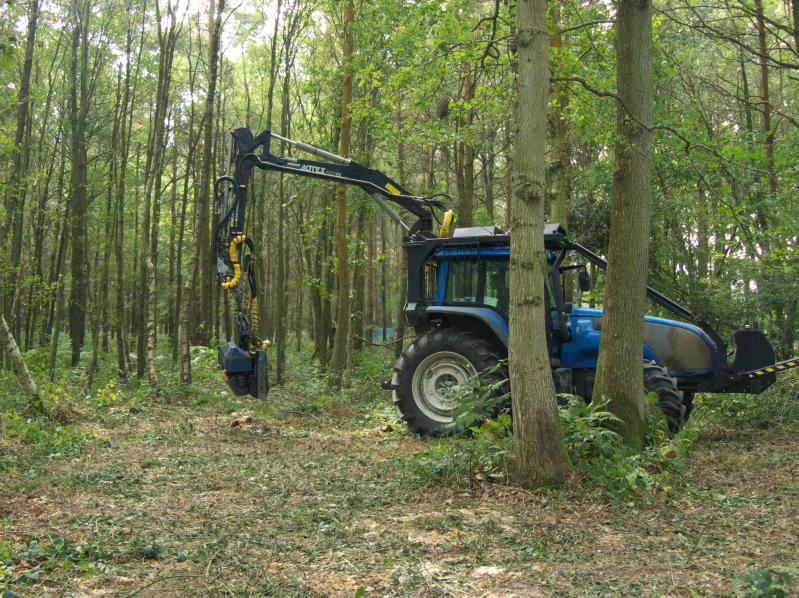 Here's a short video of it in action, although sadly the operator couldn't fell a tree while we were there due to safety restrictions
Here's a short video of it in action, although sadly the operator couldn't fell a tree while we were there due to safety restrictions
One of the handy things about it is that while processing the tree it causes a lot of damage to the bark, which then helps the log dry out quickly - ideal for producing woodfuel! The point of seeing it was that harvesting heads such as this are normally fitted to very large vehicles, more than twice the size of this tractor. By fitting it to a tractor (which required some special fixings to be produced) a much more manoeuvrable system is produced, allowing it to work efficiently on woods where thinning is being carried out, as the trees being left must not be damaged. There was plenty of opportunity for us to ask the vehicle owner questions about how the system works and what it's pros and cons are:
The point of seeing it was that harvesting heads such as this are normally fitted to very large vehicles, more than twice the size of this tractor. By fitting it to a tractor (which required some special fixings to be produced) a much more manoeuvrable system is produced, allowing it to work efficiently on woods where thinning is being carried out, as the trees being left must not be damaged. There was plenty of opportunity for us to ask the vehicle owner questions about how the system works and what it's pros and cons are: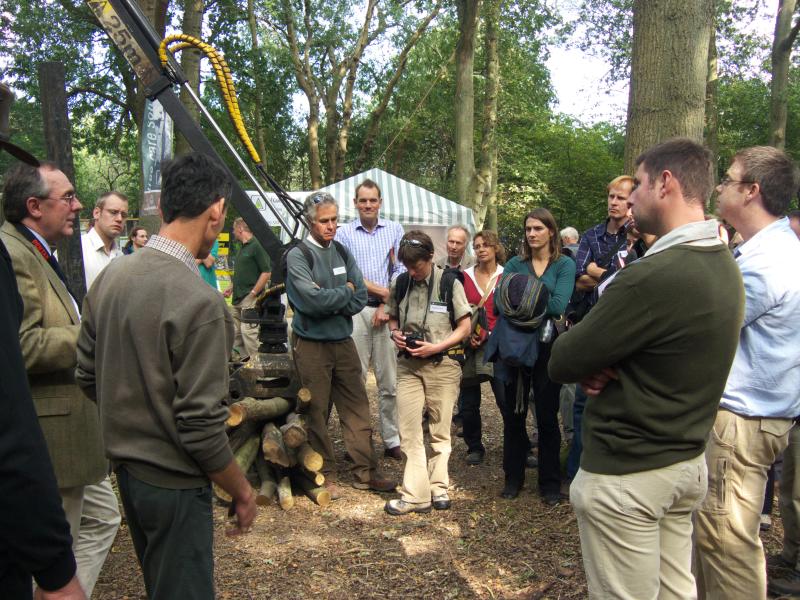 Personally, I'd prefer to see this kind of work done in what's known as "motor manual" style, which is basically people on the ground with chainsaws, and a small tractor for extracting the logs, but I can see that this doesn't work for everyone, so if this system means that woodfuel can be produced from woodland that would otherwise be left unmanaged, then that's good.
Personally, I'd prefer to see this kind of work done in what's known as "motor manual" style, which is basically people on the ground with chainsaws, and a small tractor for extracting the logs, but I can see that this doesn't work for everyone, so if this system means that woodfuel can be produced from woodland that would otherwise be left unmanaged, then that's good.
After the harvesting tractor, the next stop was machinery for processing the wood into logs for use in woodburners. There were various large hydraulic splitters that could run from the PTO (Power Take-Off) on a tractor: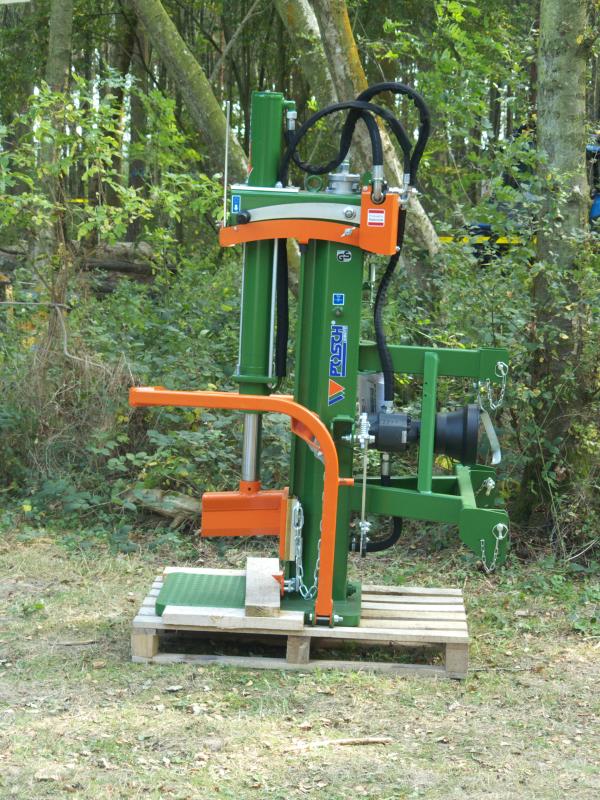
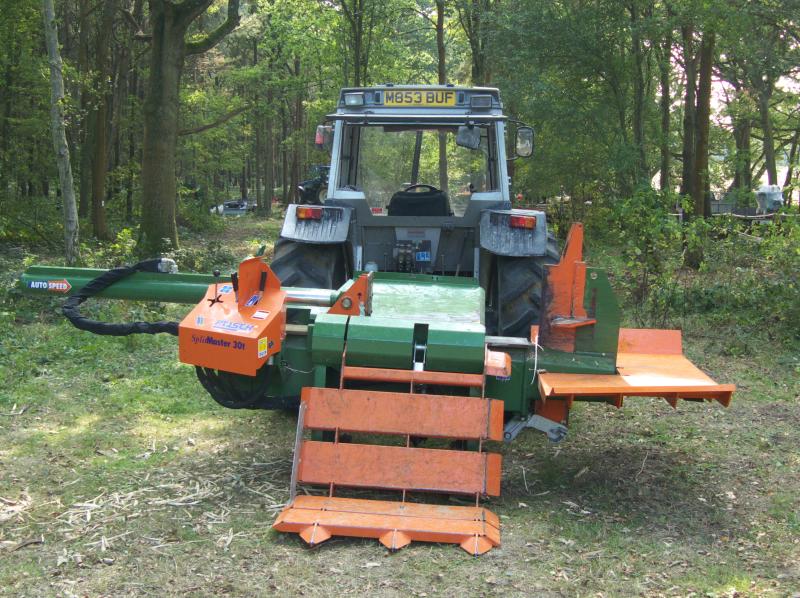 The split logs can then be cross-cut by a PTO-driven circular saw:
The split logs can then be cross-cut by a PTO-driven circular saw: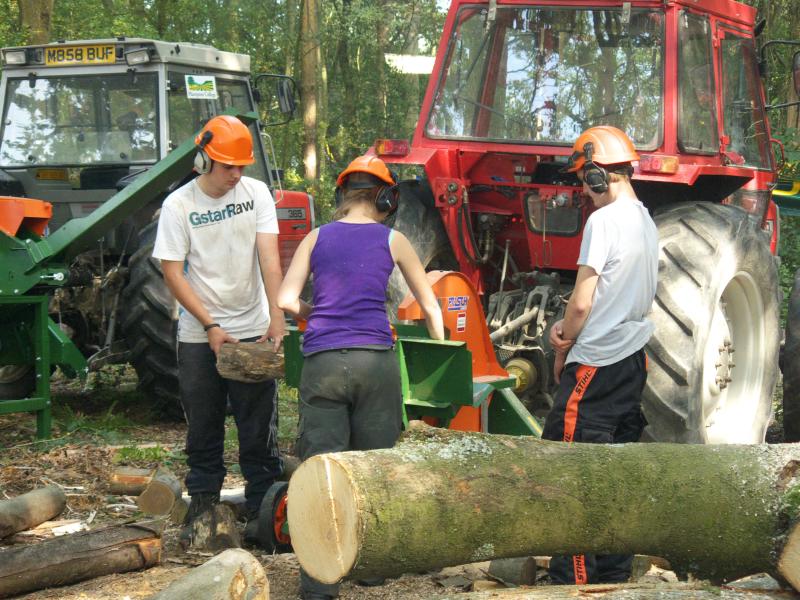 Alternatively, it is possible to use a single machine which cross-cuts a log and automatically triggers a hydraulic ram to split the section that's been cut off:
Alternatively, it is possible to use a single machine which cross-cuts a log and automatically triggers a hydraulic ram to split the section that's been cut off: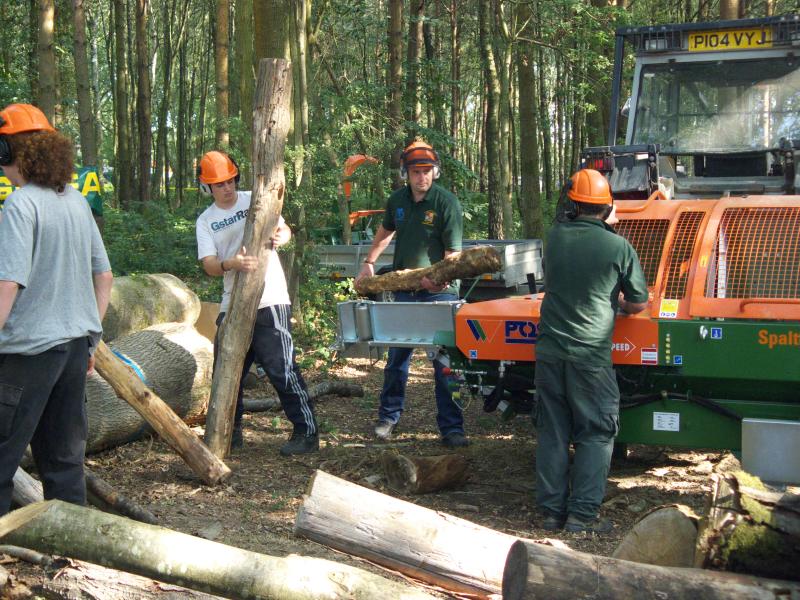 The split pieces of wood are then carried up a conveyer belt to be dropped into a waiting truck:
The split pieces of wood are then carried up a conveyer belt to be dropped into a waiting truck: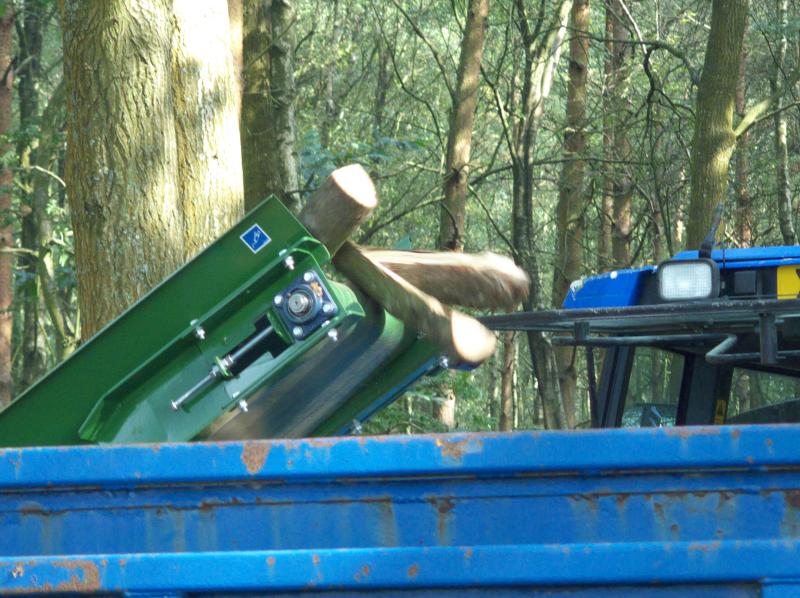
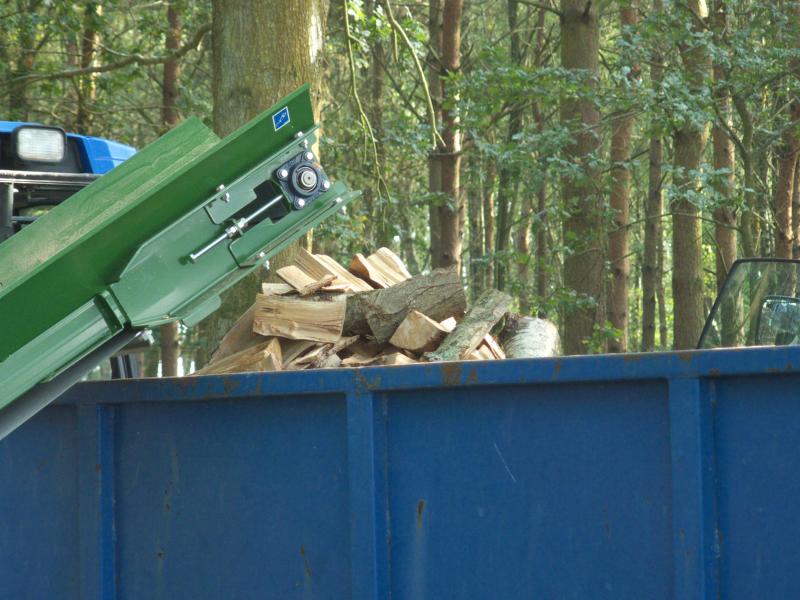 Of course, lighting a woodburner doesn't just need logs, you need kindling too, and we saw a machine for making that as well. Kindling is a higher-value product for a woodland owner to produce - converting logs into kindling can add up to 50% to their value.
Of course, lighting a woodburner doesn't just need logs, you need kindling too, and we saw a machine for making that as well. Kindling is a higher-value product for a woodland owner to produce - converting logs into kindling can add up to 50% to their value.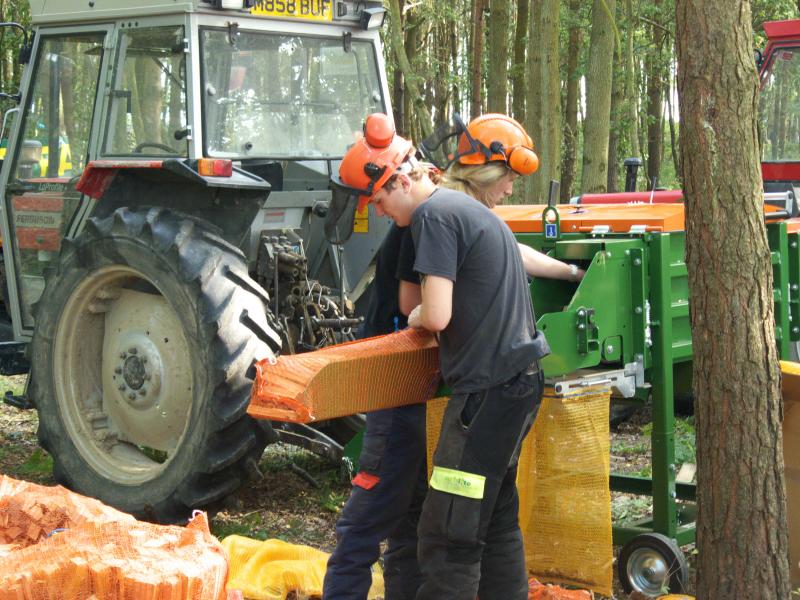
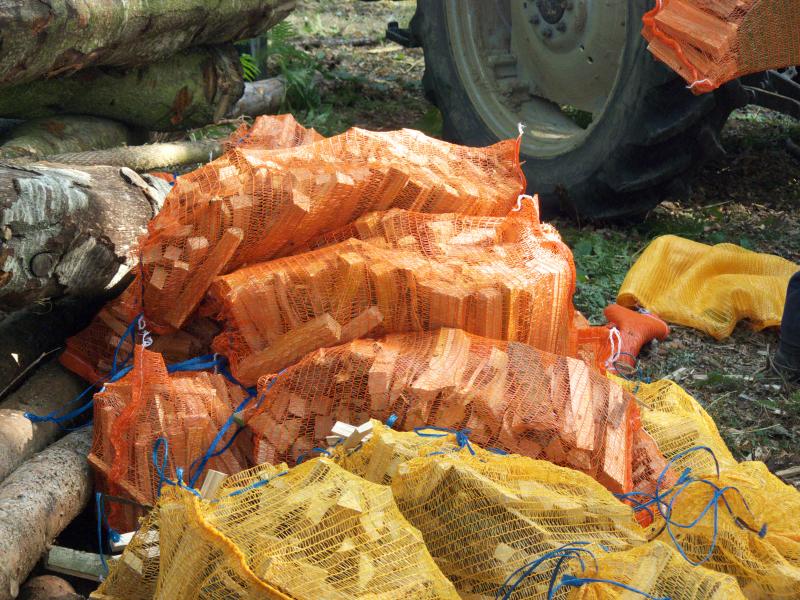 Finally, we went to see a large and a small machine producing woodchip, which can be used in automated boilers.
Finally, we went to see a large and a small machine producing woodchip, which can be used in automated boilers.
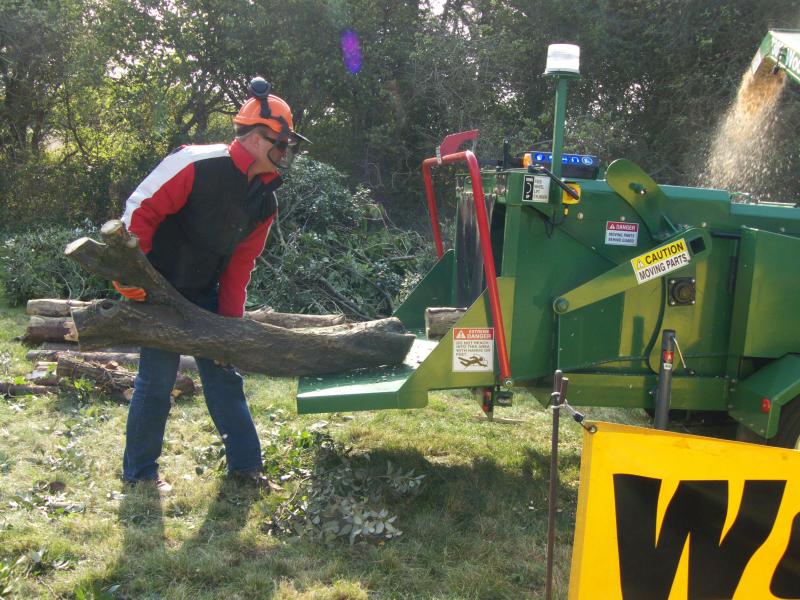
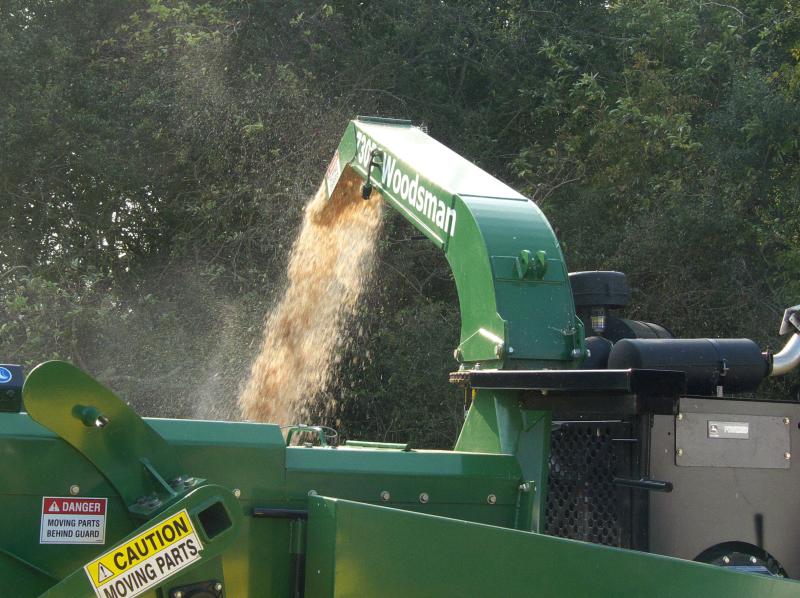
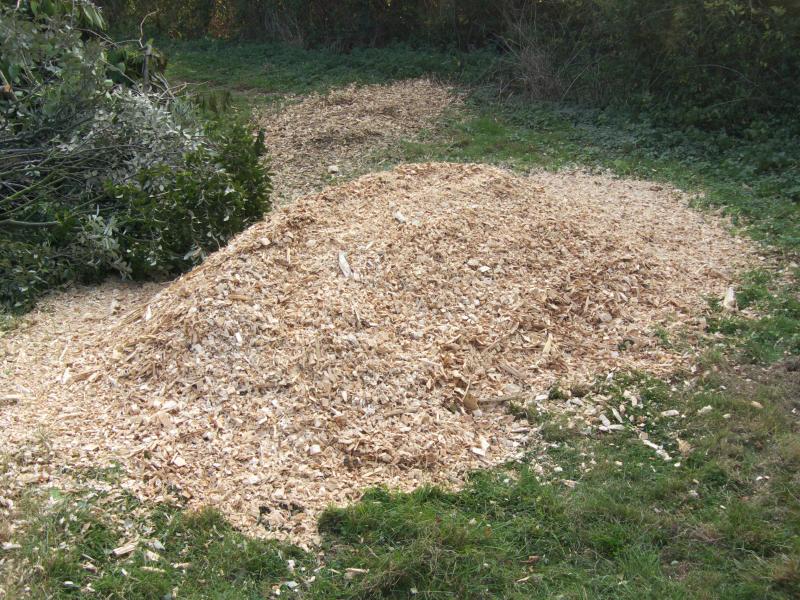
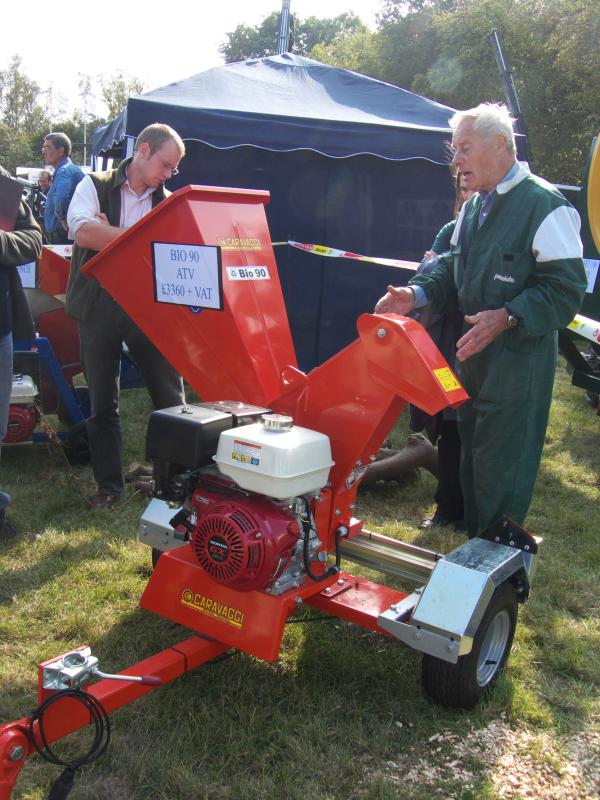
 Here's a video of the larger chipper in action:
Here's a video of the larger chipper in action:
Anyway, that was the afternoon, but in the morning I went to a series of short lectures. Here's the details:
Sally Marsh, Director of the High Weald AONB, opened the session by explaining that the region has 30% woodland cover, and could sustainably meet 15% of local heating needs. She also mentioned the woodland archaeology and biodiversity, which must always be considered in any woodland management plan.
Tom Vosper, of Creative Environmental Networks, explained the different regulations that affect the use of wood-fuel.
James Noble, of Esus Forestry and Woodlands, spoke to us about bringing neglected woodland back into sustainable management. A management plan must always start with clear goals, which could include sustainability, biomass fuel production, conservation and safety. Two key factors dictate the management options: what is possible with the woodland, and what is possible with the owner! Lack of management will gradually reduce the options available over time. The challenges facing owners wanting to manage woodland sustainably are:
Gillian Alker and Jane Hull, from the Forestry Commission, discussed the different grants that are available for producers and users of biomass fuel:
Julian Morgan-Jones, of South East Wood Fuels Ltd, explained some of the critical considerations for supplying fuel to end users. The key points were:
Well, that sums up the workshop, but there was also a lot of other wood-related stuff at the fair, such as mobile sawmills: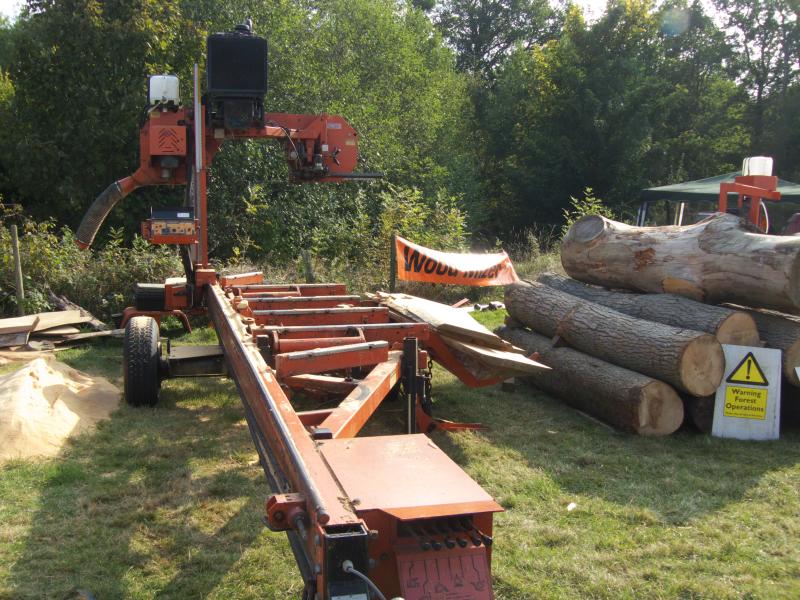 chainsaw sculpture:
chainsaw sculpture: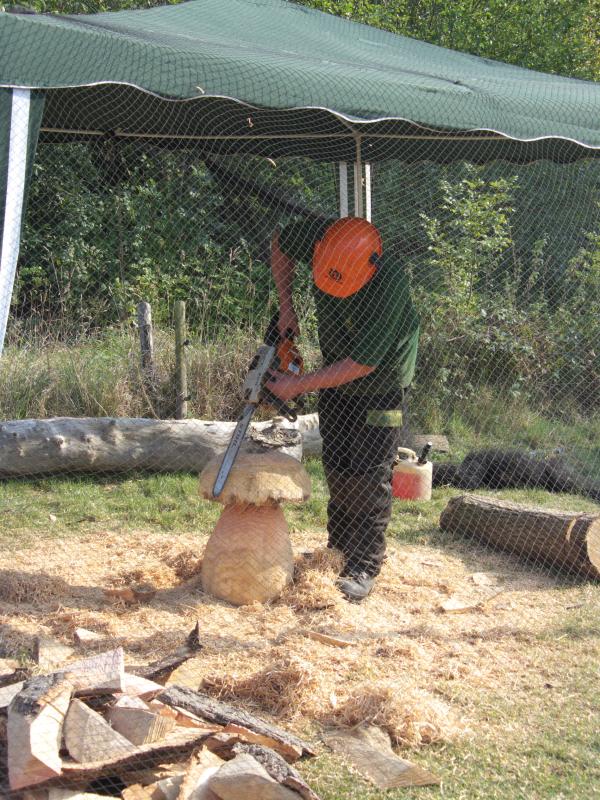 arrays of machinery:
arrays of machinery: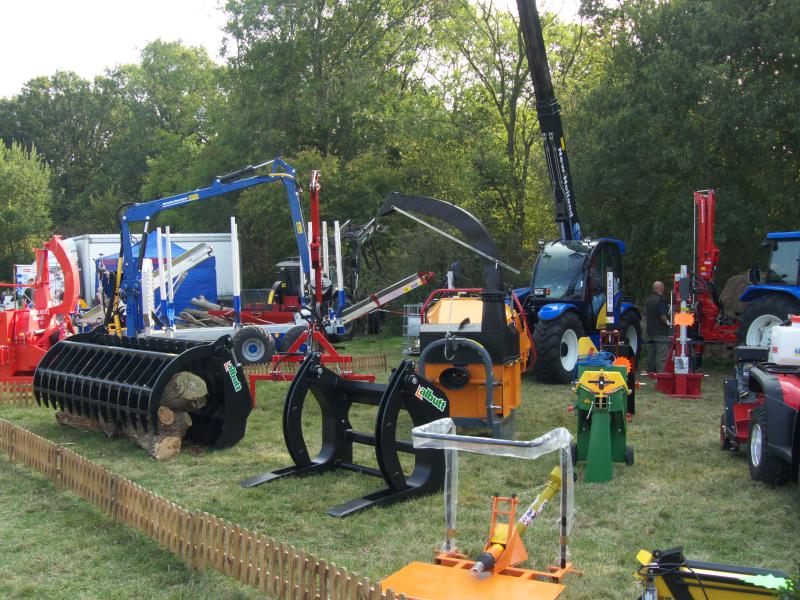 traditional crafts:
traditional crafts: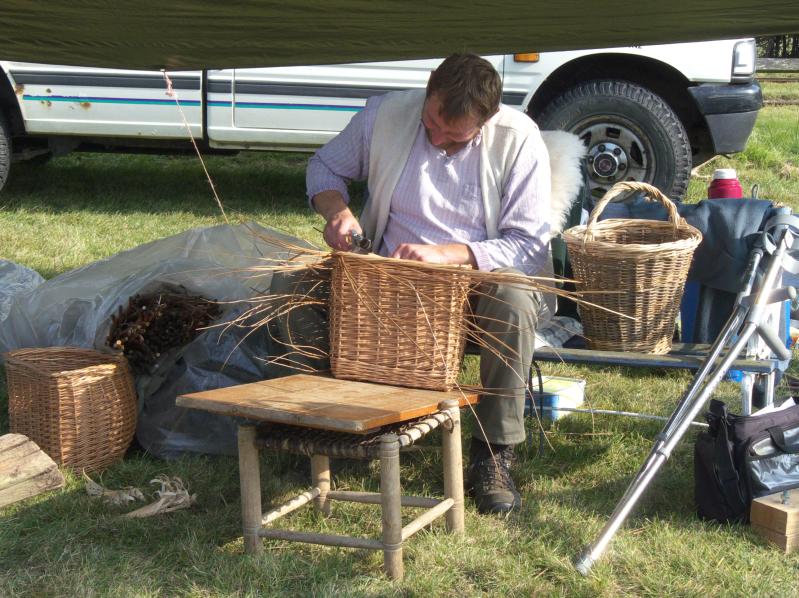


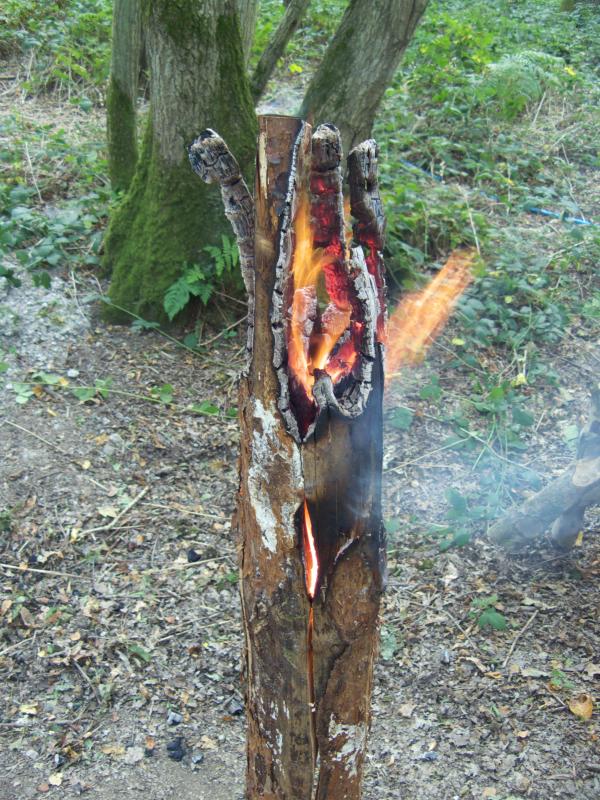 and crowds of people:
and crowds of people: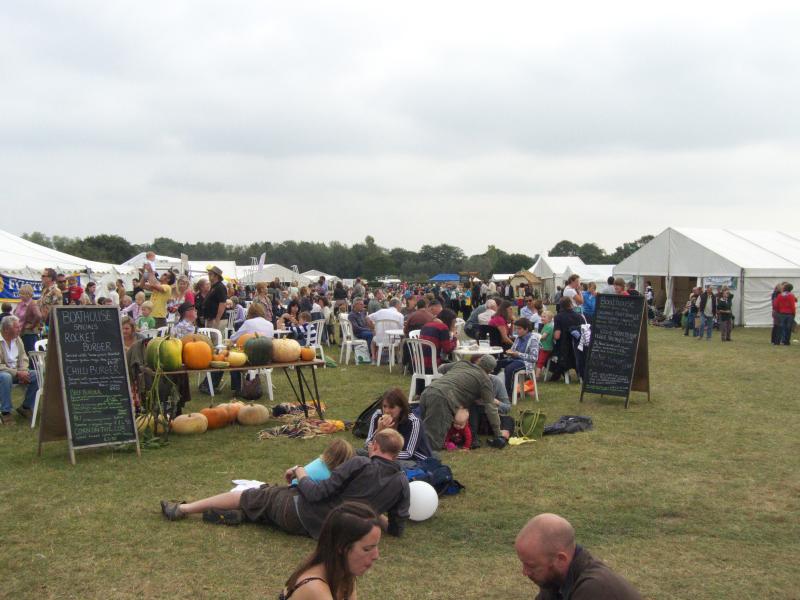
 For more information on organisations producing and using woodfuel, visit the Ashden Awards website.
For more information on organisations producing and using woodfuel, visit the Ashden Awards website.
Mike Pepler
Technical Manager
Ashden Awards
Thursday, 24 September 2009
Woodfuel workshop at Bentley Woodfair
Subscribe to:
Post Comments (Atom)



1 comment:
These kind of workshops are an extremely positive thing. Raising awareness of the benifits of woodland management is a key factor in pushing the cause of increased management. Such a small percentage of Britains woodlands are managed, this needs to be changed in order to develop vital landscape. The social, economical and most importantly enviromental benifits of woodland managemnet are hugely important.
William O´Neil - Posting from Argentia
Post a Comment